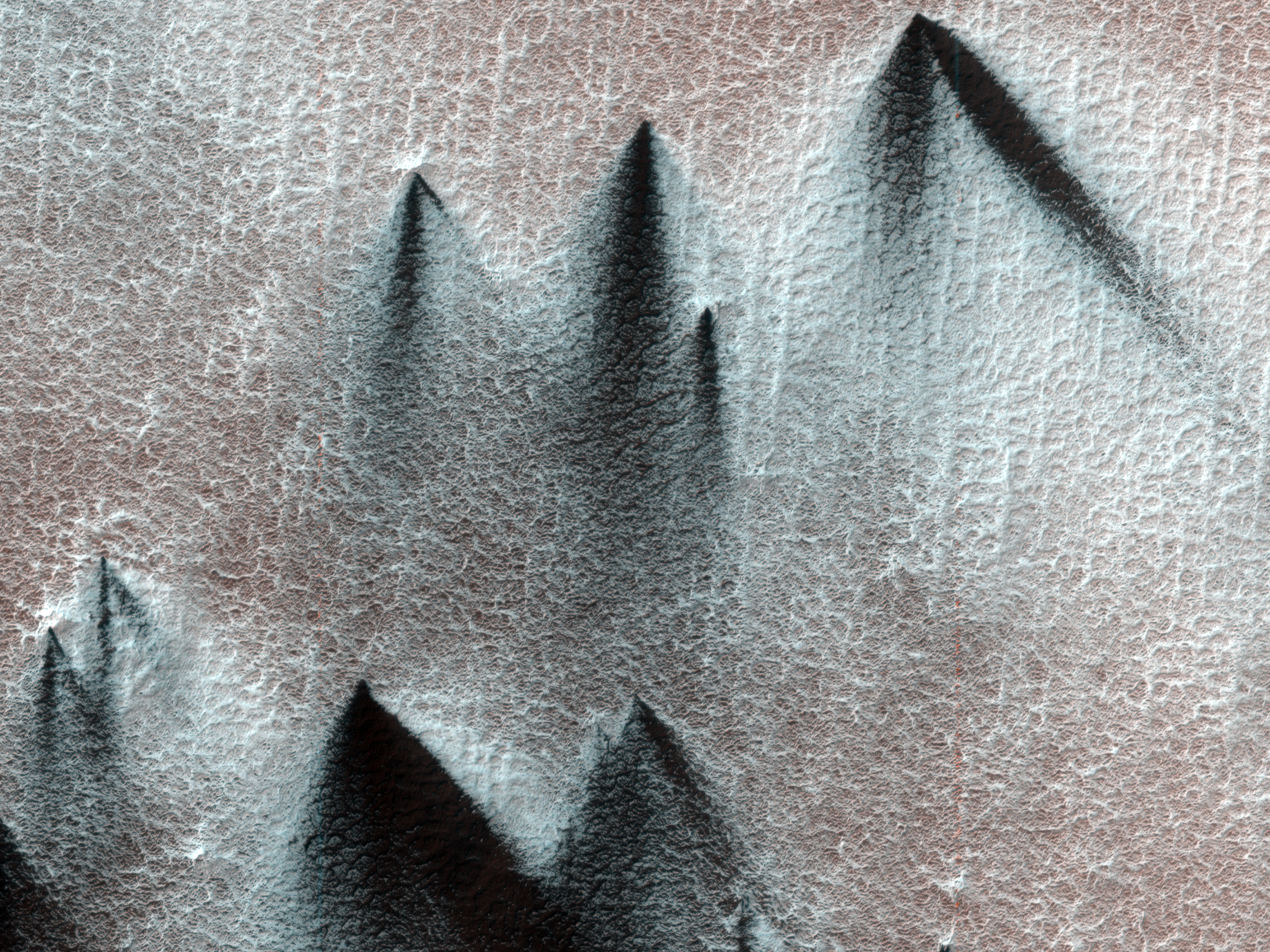During the long dark night of Martian winter at the South Pole, carbon dioxide in its solid form (also known as “dry ice”) accumulates and forms a seasonal polar cap.
As the sun comes up in the spring, the ice evaporates in a complex way. This observation shows dark dust being blown across the seasonal south polar cap. The dust comes from the surface beneath the ice: it either starts at spots bare of ice, or it’s possible that it’s lofted from below the ice in geyser-like plumes.
Local winds blow the dust from its source, forming a long fan. When the wind changes direction, a new fan is formed
pointing in the new direction In this single image we can see that the wind has blown
in a number of directions. This data will be used to study weather patterns near the South Pole.
ID:
PSP_003180_0945date: 1 April 2007
altitude: 245 km
https://uahirise.org/hipod/PSP_003180_0945
NASA/JPL-Caltech/University of Arizona
#Mars #science #NASA
